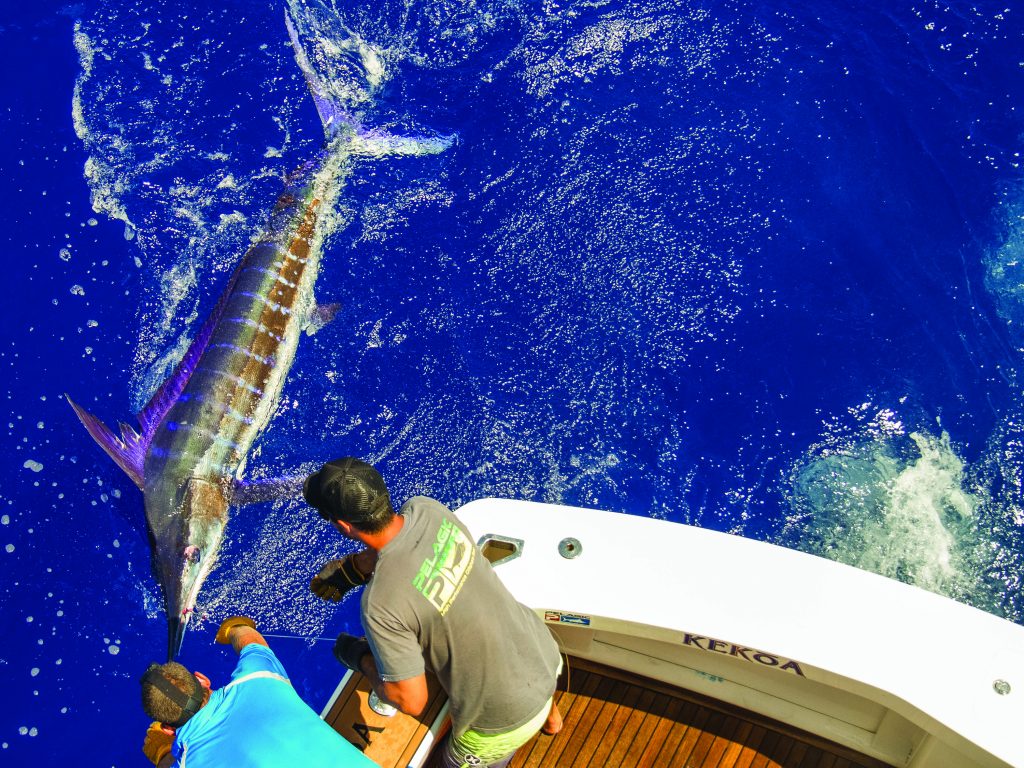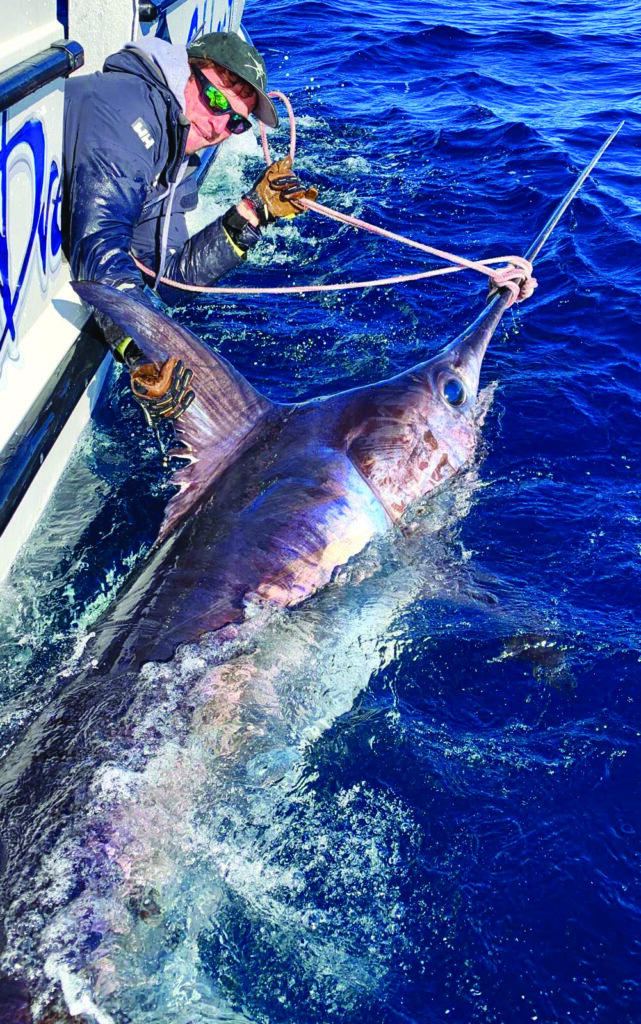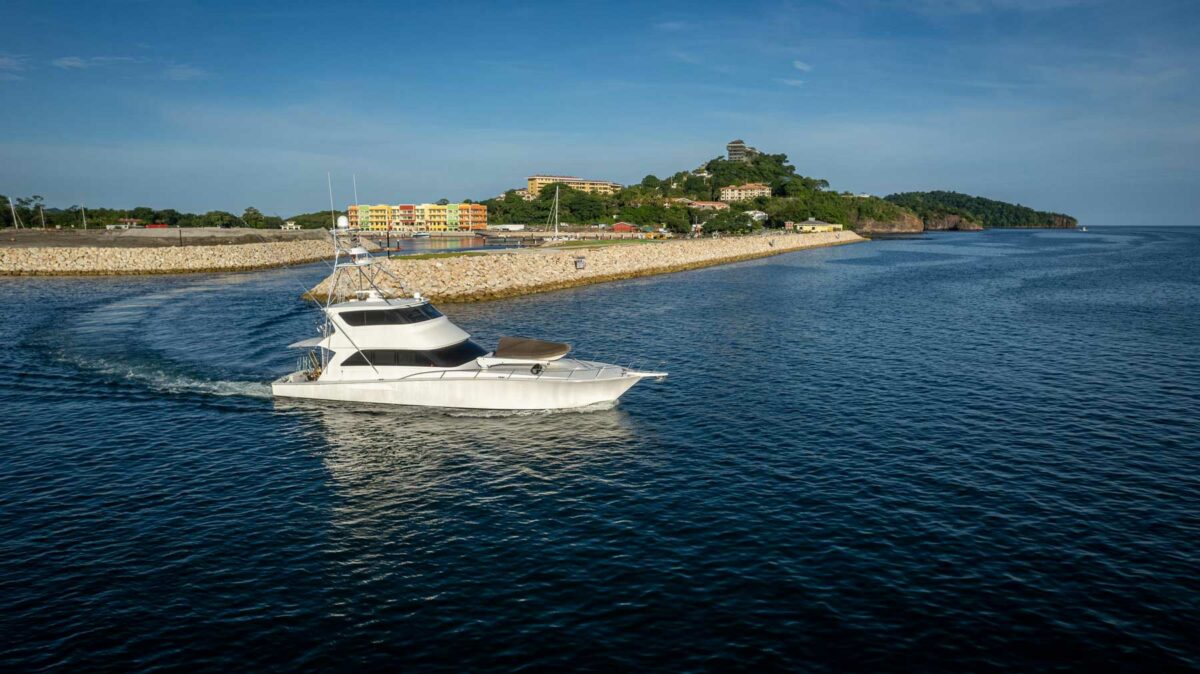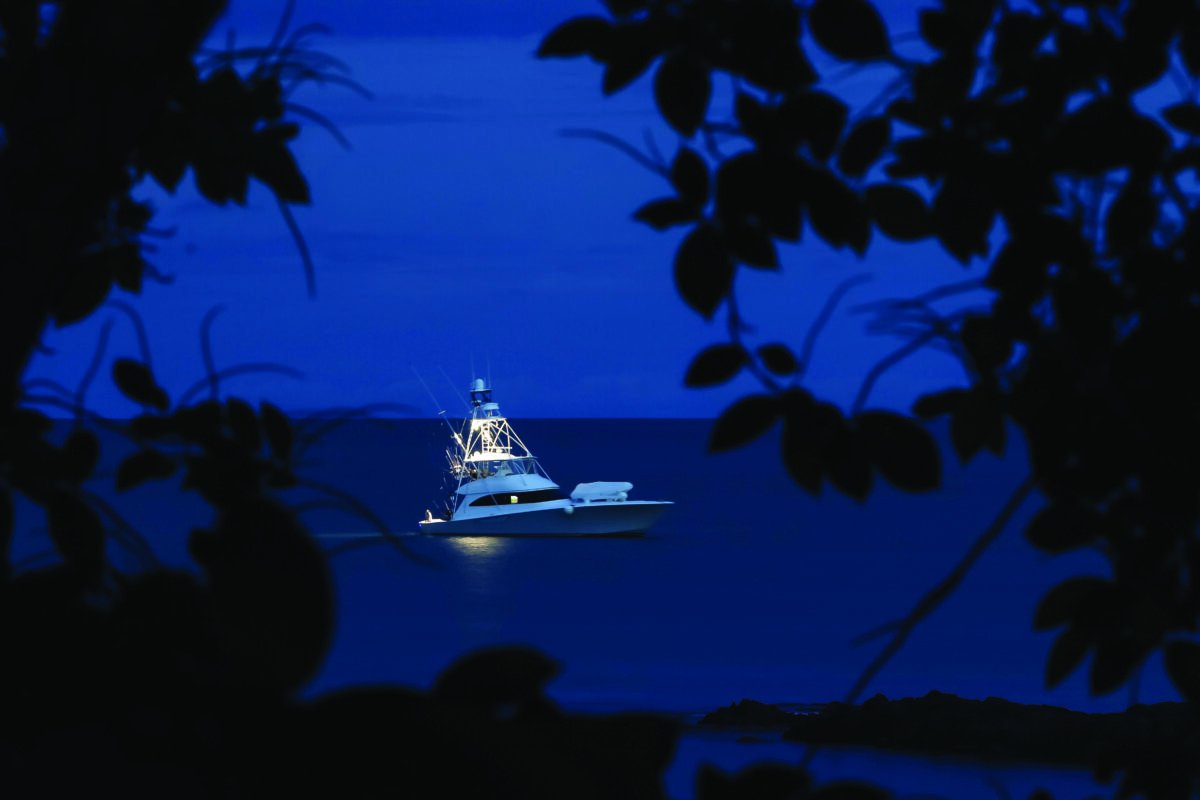If there were to be a national billfish of Australia, it would certainly have to be the black marlin. But our famed east coast has so much more to offer beyond the Great Barrier Reef heavy tackle fishery that immediately springs to mind when anglers fantasize about traveling to the other side of the globe. World-class numbers of blues, stripes and juvenile black marlin exist, as well as a flourishing broadbill fishery. Realistically, visiting anglers can experience stunning action every month of the year. Australia is a unique country and island continent, with the east coastline spanning nearly 3,500 miles from Cairns to Melbourne. To put it into perspective, this is about 300 miles greater than the distance from Florida to Maine. It a massive amount of coast to explore. The diverse local fisheries range from the warm tropical waters off Cairns and the Great Barrier Reef to the cool and nutrient-rich deeper waters of the Tasman Sea off New South Wales (NSW). Offshore encounters are influenced by the East Australian Current (EAC), a ribbon of water linking the Coral and Tasman seas. This current pushes against the Australian continent and gathers momentum as it passes through southeast Queensland and into northern NSW. As these narrow, deep-reaching warmer waters move south, they converge with certain geographic features of the coastline and mix with the colder southern water, where large eddies form, creating distinct pelagic playgrounds. Ideal conditions appeal to migrating black marlin and might delay their movement south for months at a time. These identifiable features, and the temperature breaks they bring about, also attract blue and striped marlin. One of these eddies forms seasonally off Port Stephens, producing the famous marlin mecca known as the Car Park. In its counterclockwise flow, the EAC also slams the coast of Seal Rocks and then surges east out to sea. Creating a natural eddy, this feature transforms canyons into football fields of bait as the fast-moving current returns back inshore. Continuing south along NSW into Victoria and down to Tasmania, the continental shelf is at its closest point to shore. The proximity of the shelf, where relatively shallow waters of around 200 meters drop off to thousands of meters deep, makes this part of the coastline very appealing and accessible to trailerboat fishermen. And it is this environment with its deep bathymetric structure that is also home to a burgeoning daytime swordfish fishery. Already, the waters there are producing big fish in surprisingly consistent numbers.
The Big 4
Black Marlin
Statistics from the NSW Department of Primary Industries, who have administered Australia billfish tagging program since 1973, indicate that black marlin are tagged in Australia in excess of twice as often as any other species of billfish each year. For anglers who want a black marlin on their billfish royal slam bucket list, Australia is a must-visit destination. Of course, the Cairns giant black marlin fishery, already more than 50 years young, remains the most reliable place in the world to target the heavy tackle fish. From September to December, the area draws in many adult specimens thanks to both its abundant food supply as well as its warmer waters desirable for the highly fecund females, generally 26-27 degrees Celsius, and the proximity of other breeding age fish. The charter fleet follows this stock up and down a 100-mile stretch of reef. To stay on the main body of fish, liveaboard or mothership charters are best. The opportunity to catch a grander is certainly exciting, but there another black marlin fishery that equally gripping. We start catching the juveniles, the product of the previous year big fish season, as early as March and April. As soon as they are large enough to take a bait or lure, it is game on. Australians refer to these very small 3-4kg fish as micros. In this arena, you cant look past Fraser Island where 20-plus fish days are feasible. Fraser has two distinct runs of these light tackle micro marlin. The first occurs over the Australian winter, with smaller fish in the sub-kg range, which are the outcome of a more southern spawn beyond Cairns. Although the juvies are still caught in good numbers through August and September, bites pick up in October and November. Then, a second wave typically passes through. These fish were previously foraging off Cairns and Townsville, following that inshore 30-meter line and bait southward. During this time, it possible to catch the little blacks inside of Fraser Island in the waters off Rooney Point. This is a unique place where baby marlin are present in numbers. Without a doubt, it is the best spot in the world to catch a black marlin on fly. According to Dr. Julian Pepperell, known fondly to Australian game fishermen as Dr. Fish and one of our most prominent billfish scientists, there is zero correlation between a good Cairns marlin season and a resulting positive light tackle season. A single adult female can produce more than 40 million eggs, so it is not the number of larvae they produce is not important. Only when the conditions are ripe for their survival do the fish flourish and our light tackle seasons run hot. During their early lives, juvenile black marlin are an acrobatic and entertaining fish on light and ultralight tackle. They are also easy to catch, as they feed voraciously to gain body mass and move up the food chain. Throughout the year these feisty fish eat their way down the east coast, producing a vibrant fishery beyond the traditional North Queensland light tackle grounds. Australia was made for adventuring, and the Gold Coast has dazzled as a superb fishing destination. For overseas travelers looking to enjoy a summer-style Christmas down under, the Gold Coast is the place to be. Renowned for its white sand beaches with popularized surf breaks such as Snapper Rocks and Burleigh Heads, the area is also Australia holiday playground with plenty to entertain, including a number of theme parks and accommodation options to suit any budget. Black marlin generally begin to filter through these waters in December and can appear all the way through March. By the time their southern migration reaches the Gold Coast, they are now in the 20kg range and can be caught in double digits. The fish under 10 kg can reach 25 kg upon nearing Port Stephens, one of the southernmost points of black marlin fishing. By this point, in February and March, they are just over one year of age. While the juveniles often return north after migrating south, we know little about their early life beyond that first year.
Striped Marlin

Big striped marlin stack up when mackerel schools converge atop offshore reefs and canyons.
Blue Marlin
Most of the blue marlin fishing in Australia occurs along the continental shelf. Fraser Island, with seemingly more catch effort each year, produces the best fishing for blues during October and November. The sandy island bays and points provide safe anchorage in various weather conditions, allowing multiple-day expeditions close to the fishing. Double figure days are very possible during peak activity. With the juvenile blacks still frequenting the area in big numbers during the same period, throw in a big stripe on the edge, which often swim among the blues, and you have another potential grand slam hotspot. Further south on the Gold Coast, blues can be caught almost year-round. Though, the fish seem to run most consistently during April and May, when four- or five-fish days can be commonplace. What nice is that the run is quite reasonable, with the grounds only 20 miles offshore. These fish often fall in the 100-200kg range. For bigger fish, traditionally the south coast of NSW was considered the main contender for Australia first grander blue marlin. Yet the title was unceremoniously stolen by Exmouth, WA in 2018. Conversely, while the fleet instead focuses on big blacks, there has been a good number of blue marlin over 800 lbs. weighed in Cairns.
Broadbill Swordfish

(Photo/Richie Abela)
Getting There
Visiting Australia from North America is quite the haul, but well worth the time invested. Embarking from the east coast, traveling anglers fly to Los Angeles, then on to Brisbane, Australia. It about 15 hours, so dont forget the latest issue of InTheBite. From Brisbane you can stretch your legs near the Gold Coast, which is only 70km south, or head to Victoria and the land of giant broadbills. If the big fish bite is on at the Great Barrier Reef, then it best to fly right to Cairns for a night at the Shangri-La Hotel. Early season trips depart from Cairns, but many operations relocate to Cooktown to follow the bite, which is about a three-hour drive north.













